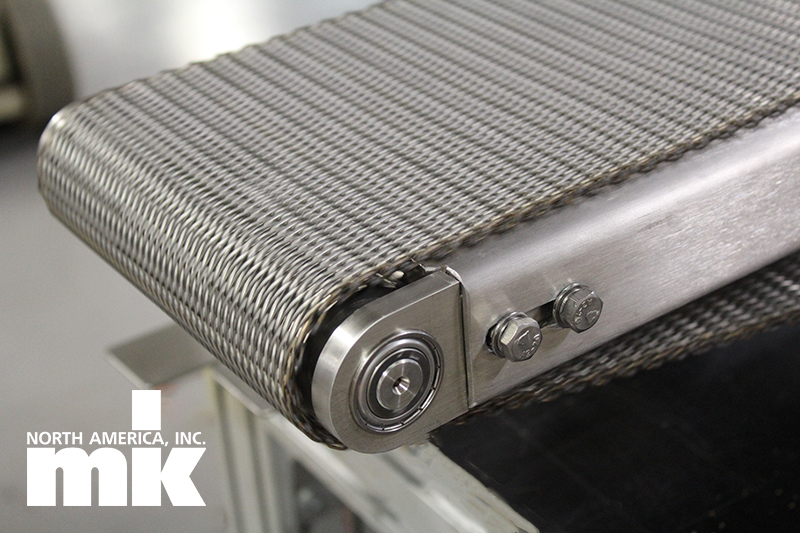Conveyors play an integral role in many industries. The systems are used for assembly, in processing facilities, and so much more.
Because there are so many different possibilities when it comes to what’s being conveyed, understanding your specific needs and requirements is critical in getting the job done right.
When narrowing down the choices, consider things like the type of conveyor belt as well as the type of product traveling on the conveyor and temperature requirements, as each plays an integral role in what conveyor solution is best.
Let’s take a closer look at conveyor solutions for hot products and how typical issues that arise under these conditions can be avoided.
Conveying Hot Products
At a very basic level, hot products are more difficult to transport and handle simply because they are too hot temperature-wise for humans to hold and, depending on the item, could still be in the curing or cooling phase.
Items that fall into this category can include hot foods, plastics, metals, and others. They require special belting to withstand the high temps and move them along a conveyor system. In some scenarios, a special environment to cool or to maintain the heat, may also be needed.
Proper Belt Use
Items that reach above normal temps (140F) can wear typical belts unevenly. To prevent this from happening, and to make the process of conveying hot products a smooth one, wire mesh, stainless steel belt conveyors are usually used. Woven wire belts are both durable and able to withstand extreme temperatures.
Conveyor belts are typically made of PVC or PU. Since PVC is only rated to 160F and PU at 212F, products above these temperatures should be conveyed using a belt conveyor made of silicone or Teflon with woven metal mesh. Fiberglass is also a specialty option for transporting extreme temperature items. Also good for sharp parts and food are plastic modular belts. Like flat belts, these come in a variety of plastics; all designed to withstand various temperatures. Further along the spectrum are industrial chains which are ideal for long or rugged parts.

Consider Conveying Medium & Type
Using the wrong conveyor type with hot products can cause the conveyor to have a shortened lifecycle, malfunction and even cause product damage. An example of a conveyor malfunctioning would be a part that burns the conveyor belt. This could lead to belt tracking issues, which, aside from the obvious premature wear of the belt, can affect the longevity of the conveyor. If a part is too hot, it could have an effect on the substrate that is beneath the belt – in some cases this is a form of steel, but in many other cases, an engineered plastic like an ultra-high molecular weight polyethylene (UHMW-PE). Even if a woven steel belt is used to carry the hot part or product, the fact that it is running on a slow conveyor and the heat is getting transferred to the substrate, means it can start to soften and the damage will eventually cause the conveyor to fail.
Special Environment Considerations
Much of what we’ve discussed is related to conveying a product that is hot. However, if the conveyor is exposed to extreme high temps in the process, the entire system needs to be designed to meet that environment. In some cases, a hot item may require the entire conveyor system to move smoothly and gently without disrupting a hot liquid for example. For these scenarios, special environments are created to ensure the conveyor still operates smoothly even within these applications.
Have a product you need help with? Contact Blettner Engineering to help you to customize a design system to work in specialized applications including belts and conveyors that can do everything from operate as a single lane, carry large products and even include plate glass.
Want to learn more:
mk North America has many styles of conveyor solutions, contact any one of the team members @ Blettner Engineering or by calling 317-862-9580.
